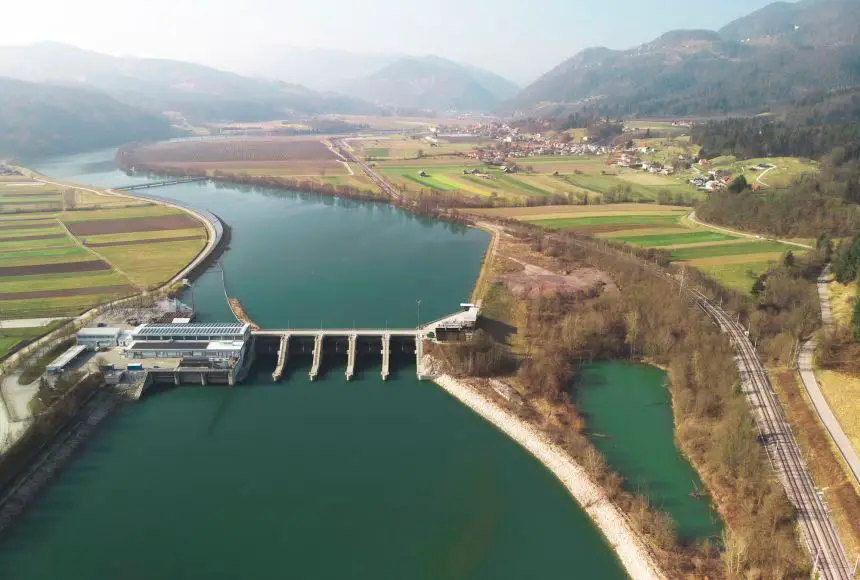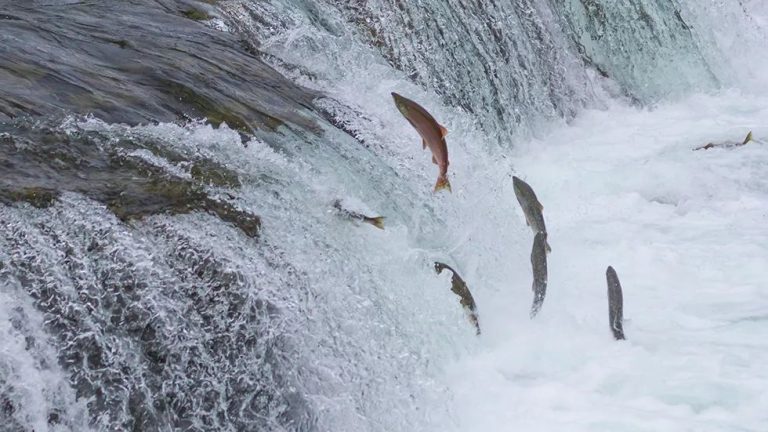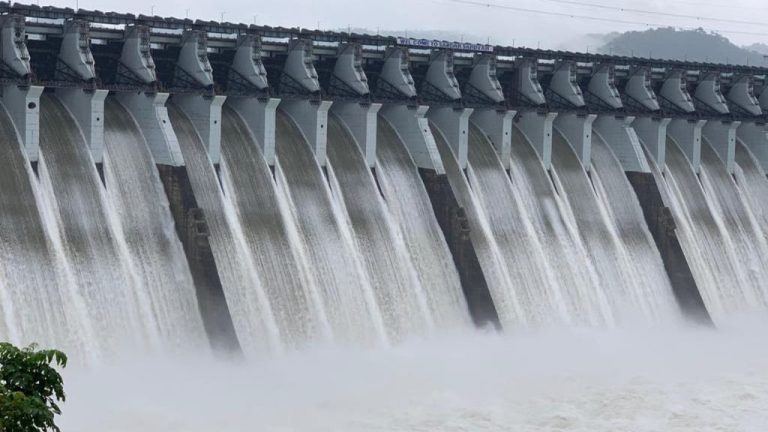What Is The Run Of The River Dam?
What is a Run of the River Dam?
A run of the river dam is a type of hydroelectric dam that harnesses the power and flow of a river to generate electricity without the need for a large reservoir. Unlike conventional hydroelectric dams that store large amounts of water in reservoirs, run of the river dams allow the river to flow through turbines and then continue downstream with minimal disruption to its natural flow.
Run of the river dams operate by diverting a portion of a river’s flow into a channel or penstock which leads to the electricity generating turbines. The diverted water rotates the turbines to produce electricity. After passing through the turbines, the water is discharged back into the river downstream, allowing the natural flow of the river to continue. The amount of electricity generated depends on the natural flow of the river rather than an artificial reservoir.
Compared to conventional hydroelectric dams, run of the river dams have a much lower environmental impact as they do not require flooding large areas to create an artificial reservoir. They can provide a renewable source of electricity while allowing the river ecosystem to function more naturally. However, electricity output can fluctuate seasonally depending on water flow in the river.
Notable examples of run of the river dams include Chief Joseph Dam on the Columbia River in Washington state and Lemon Dam on the Bow River in Alberta, Canada.
Benefits of Run of the River Dams
Run of the river dams provide several key benefits compared to conventional hydroelectric dams:
Clean renewable electricity generation. Run of the river dams generate electricity from the natural flow of rivers and streams without needing to burn fossil fuels. This makes them a sustainable source of renewable energy. According to EnergyEducation.ca, run of the river hydro produces fewer greenhouse gas emissions than fossil fuel combustion[1].
No large reservoirs needed. Conventional hydroelectric dams require large reservoirs to store water, which can disrupt ecosystems and wildlife habitats. Run of the river dams do not require large reservoirs since they use the natural flow of the river[2].
Less environmental impact. Compared to conventional hydroelectric dams, run of the river dams are considered more environmentally friendly because they do not greatly alter the natural flow of the river or require flooding large areas for reservoirs[2].
Challenges of Run of the River Dams
One key challenge of run of the river dams is that they have less electricity generation potential compared to large conventional dams with reservoirs. Run of the river projects only generate power from the natural flow of the river and lack the ability to store water for electricity production during peak demand times. This limits the maximum capacity of electricity they can provide to the grid compared to dams with large reservoirs for water storage.

Run of the river dams can also impact fish populations and migratory routes, despite having a smaller footprint than conventional dams. The turbines in run of the river facilities can injure or kill fish passing through them. Fish ladders are often implemented to try to mitigate this, but their effectiveness is debated. Projects must be carefully sited to avoid sensitive fish habitats. According to one source, “In general, projects with high ‘head’ (the distance the water falls) have greater impacts than projects with low ‘head'” (Source)
Examples of Run of the River Dams
Here are some notable examples of run of the river dams in Canada, the United States, Europe, and other parts of the world:
In Canada, the 16 MW run of river Clowhom Dam in British Columbia is one of the largest run of river facilities in the country. Other major Canadian examples include the 195 MW Upper Lillooet River Hydro Project and the 123 MW Toba Montrose project, both also located in British Columbia.
In the United States, the Chief Joseph Dam in Washington is a major run of river dam with a capacity of over 2600 MW. Other major U.S. run of river dams include the Roza Dam (553 MW) and the Rocky Reach Dam (1,300 MW), both located on the Columbia River in Washington State.
In Europe, the 852 MW Kárahnjúkar Hydropower Plant in Iceland gets its water from glacial rivers and operates as a run of river facility. The 1,700 MW Paradela Hydroelectric Complex in Portugal and the 1,896 MW Innertkirchen 1 Hydropower Plant in Switzerland are among the largest run of river dams in Europe.
Some of the largest run of river dams in the world are located in developing countries. These include the 3,750 MW Jirau Dam in Brazil, the 1,500 MW Allain Duhangan Hydropower Station in India, and the 1,040 MW Nam Ngum 2 Hydropower Plant in Laos.
Cost of Run of the River Dams
The cost to build a run of river dam can vary greatly depending on the size of the project, location, and site specifics. However, run of river projects are generally less expensive than conventional hydroelectric dams because they require less concrete and excavation since they do not need large reservoirs.
According to the National Renewable Energy Laboratory (NREL), capital costs for run of river projects in the US can range from $2,400-$14,500 per kW of capacity. On average, capital costs tend to be around $3,500-$5,000 per kW.1
Operating costs are relatively low for run of river dams. There is no fuel cost, and maintenance is estimated at 1-2% of capital costs per year. However, financing costs can be significant.
The levelized cost of energy (LCOE) for run of river projects ranges from $0.03 – $0.13 per kWh, with an average of around $0.05 per kWh. This is competitive with other renewable energy sources like wind and solar.2
Overall, run of river dams require moderate upfront capital investment, but have very low operating costs and competitive LCOE.
Environmental Impacts
Run-of-river dams can have significant environmental impacts, particularly related to fish habitat and migration. By damming the river, run-of-river projects reduce water flows and can impede fish passage, preventing access to upstream spawning areas. For example, according to research from Portland State University, run-of-river dams in the Pacific Northwest have contributed to population declines of ESA-listed salmon and steelhead. Dams create stagnant pools and slow water velocity which can increase water temperatures and decrease dissolved oxygen levels, degrading habitat quality.
Run-of-river dams also change natural flow regimes. By diverting water to generate electricity, they reduce river flows downstream of the diversion point. This can negatively impact riparian vegetation that depends on regular flooding. Altering flow patterns also negatively affects sediment transport and can increase streambed and bank erosion downstream (https://www.eia.gov/energyexplained/hydropower/hydropower-and-the-environment.php). Overall, run-of-river projects disrupt connectivity and hydrologic processes that are critical to sustaining healthy river ecology.
Regulations for Run of the River Dams
Construction and operation of run of the river dams are regulated through permitting requirements at both the state and federal level. In Pennsylvania, run of the river dams are regulated under the Dam Safety and Encroachments Act which is administered by the PA Department of Environmental Protection (PA DEP) and the PA Fish and Boat Commission.
Under this law, owners of existing run of the river dams as well as applicants seeking to construct new dams must obtain permits from PA DEP. Key aspects of the permitting process include submitting plans for construction, an environmental assessment, and a security bond. PA DEP reviews applications to ensure proper design and construction methods are used to protect public safety, mitigate environmental impacts, and allow for fish passage.[1]
In addition to state regulations, run of the river projects may require permits from the U.S. Army Corps of Engineers under the Clean Water Act if they impact navigable waterways. These federal permits evaluate effects on water quality, wetlands, and other aquatic resources.[2]
Overall, the rigorous permitting process aims to ensure run of the river dams meet public safety and environmental protection standards before and during operation.
Run of the River vs Conventional Hydroelectric
Run of the river hydroelectric projects differ significantly from conventional hydroelectric dams. Conventional hydroelectric facilities rely on large reservoirs to store water, which is then released through turbines to generate electricity. This allows electricity to be generated on demand when needed. Run of the river projects do not utilize large reservoirs for water storage. Instead, they divert a portion of a river through a pipe or channel, harnessing the water’s natural flow to turn turbines and generate electricity.
There are several key differences between run of the river and conventional hydro:
- Run of the river projects have a much smaller environmental footprint since they do not require large reservoirs flooding valleys and habitats. However, they provide less control over electricity generation.
- Conventional hydro can store water and generate electricity on demand when needed. Run of the river produces electricity depending on natural river flows, generating more power when water levels are high.
- Run of the river projects are generally less expensive and faster to build than conventional hydro dams and reservoirs.
- Conventional hydro plants can have large generation capacities, while run of the river projects usually have smaller generating capacities.
- Run of the river systems allow rivers to continue to flow more naturally, while conventional hydro dams and reservoirs heavily alter natural water flows.
Overall, run of the river hydro provides a more sustainable and environmentally friendly alternative to conventional hydro, but lacks the ability to regulate electricity generation. Conventional hydro enables on-demand power production but with greater environmental impacts. The choice depends on the needs and context of a particular site or electricity grid.
(Source: https://en.wikipedia.org/wiki/Run-of-the-river_hydroelectricity)
Future Outlook
The future for run-of-the-river hydropower appears promising due to the growth potential and technology improvements in the field. Run-of-the-river projects have become increasingly popular in recent years as they provide renewable energy with lower environmental impacts than traditional dam projects. Many countries are investing in run-of-river as part of their clean energy goals. For example, Canada aims to have run-of-the-river provide up to 11,000 MW of its electricity by 2030.
There are opportunities to further expand run-of-the-river, especially installing projects on smaller rivers and streams that have been overlooked in the past. New turbine technologies like crossflow turbines are making smaller projects more viable. Real-time monitoring and automation can also optimize energy output and reduce maintenance costs. Overall, the minimal land footprint, improved sustainability, and declining costs make run-of-the-river an attractive hydro option moving forward.
Notable Run of the River Companies
Some of the major companies involved in run of the river projects include:
Gilkes – A UK-based company that specializes in small-scale hydropower solutions including run of river projects. They have over 165 years of experience in hydro turbine manufacturing and have installed over 7,500 turbines worldwide.
Andritz Hydro – A global supplier of electromechanical systems and services for hydropower plants. They offer solutions for run of river projects and have installed over 30,000 hydropower generating units worldwide with total installed capacity of over 400,000 MW.
Voith Hydro – A division of Voith Group that provides integrated solutions for hydropower generation. They are a leader in run of river turbines and have equipped over 25,000 hydropower plants worldwide.
GE Renewable Energy – Part of GE Power, they provide hydroelectric generators, turbines, automation and software solutions. They have over 30,000 hydropower units installed in over 170 countries.
Siemens Energy – Provides renewable energy solutions including hydropower turbines, generators and automation systems. They have equipped over 7,800 hydropower plants worldwide including run of river projects.



